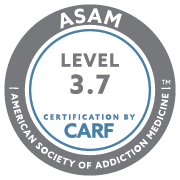In our society, Xanax is one of the most widely prescribed drugs. In fact, in 2011 doctors wrote more than 47 million prescriptions for Xanax, making it the most popular psychiatric medication in the United States. While it is one of the most prescribed drugs in this country, unfortunately, it’s also one of the most common addictive drugs. Almost half of all people who are prescribed Xanax will become addicted to it at one point or another.
As a result, Xanax is one of the most popular and simultaneously dangerous drugs currently on the market. The good news is, Xanax abuse can be treated. Below, you’ll find more information on Xanax as well as treatment options available for Xanax addiction.
What Is Xanax?
 Xanax, the brand name for alprazolam, is part of the benzodiazepine family of drugs. “Benzos” work by enhancing the effect of the gamma-aminobutyric acid (GABA) neurotransmitter in the brain. Doctors mainly prescribe Xanax to help manage anxiety disorders such as generalized anxiety disorder and panic disorder. Other conditions that Xanax can treat include:
Xanax, the brand name for alprazolam, is part of the benzodiazepine family of drugs. “Benzos” work by enhancing the effect of the gamma-aminobutyric acid (GABA) neurotransmitter in the brain. Doctors mainly prescribe Xanax to help manage anxiety disorders such as generalized anxiety disorder and panic disorder. Other conditions that Xanax can treat include:
- Agitation
- Seizures
- Mania
- Muscle spasms
- Withdrawal from alcohol
- Difficulty sleeping
Xanax typically comes in capsule-shaped pill form and is offered in one of four strengths ranging from 2mg all the way up to 25mg. It also fits into several broad categories of medications. It may be referred to as a sedative-hypnotic, a tranquilizer, or a central nervous system (CNS) depressant.
When you take Xanax, it’s carried through the blood to the brain where it interacts with the GABA receptor on the surface of certain brain cells. This interaction increases the activity of GABA receptors, slowing down normal brain function and communication. The stronger the GABA effect, the slower and more depressed certain types of brain activity become. As a result of its interaction with the brain, Xanax can produce similar effects to those of alcohol.
What Are the Side Effects of Xanax Use?
While when used as directed Xanax can produce a feeling of calm and relief, it doesn’t come without a price. As with all prescription medication, there are several potential side effects that are associated with the use of Xanax. Some of the most commonly reported side effects of taking Xanax are:
- Drowsiness
- Dizziness
- Lightheadedness
- Nausea
- Confusion
- Headaches
- Joint pain
- Memory issues
- Unusual thoughts or behaviors
- Constipation
- Fluctuation in weight
- Trouble sleeping
- Trouble breathing
- Hallucinations
- Dry mouth
Using Xanax other than medically directed can have a significant negative impact on your mental health. People using Xanax other than prescribed have also reported higher levels of depression and anxiety with increased worry. In some cases, suicidal thoughts and actions have even been reported.
Why Is Xanax Abuse So Common?
Just like any other prescription medication, the number one reason why people abuse and become addicted to Xanax is because they like the feeling it produces and crave more of it. Unlike some other drugs, the feelings associated with Xanax can be felt much quicker than with other drugs, sometimes in as few as 25 minutes. However, the feelings and sensations also tend to dissipate much faster, in as little as just a few hours.
As a result, people who are prescribed Xanax might feel like they have to take it more often. In doing so, their bodies start to create a tolerance to the drug, meaning they need more and more of it to achieve their goal. This can lead to the development of an addiction.
Once they have a dependency on Xanax, many people become afraid to stop taking it or attempt to taper off in fear of suffering from withdrawal symptoms. As a result, they continue to use and abuse the drug at a rate that is beyond what was medically prescribed.
What Are Some of the Signs and Symptoms of Xanax Abuse and Addiction?
Because many people who develop Xanax abuse are prescribed the drug, it can sometimes be hard to know if they’ve developed an addiction. If you or someone you know is taking Xanax and might be worried about abuse, there are certain signs to look out for that might signal an addiction.
The following are some of the more common signs of a Xanax addiction:
- Taking a higher dose than was medically prescribed
- Taking the drug for a longer period time than it was prescribed for
- Trying to stop but not being able to
- Spending a significant amount of time either taking it or trying to get it
- Having strong urges or cravings for the drug
- Struggling with school or work
- Neglecting responsibilities
- Continuing to use Xanax even after you have realized that it is affecting you in a negative way
- A noticeable change in mood or behavior
While becoming addicted or dependent on a drug that is designed to make you feel more relaxed might not seem like a bad thing, an untreated Xanax addiction can have significant mental and health consequences. Some of the more significant symptoms of Xanax abuse are:
- Overdose
- Death
- Coma
- Trouble breathing
- Severe confusion
- Extreme drowsiness
- Weakened or absent reflexes
- Significantly impaired coordination and risk of injury
- Problems with thinking and decision-making
- Poor memory
- Regularly feeling confused
- Difficulty speaking/slurring words
- Weakness
- Poor coordination
- Legal or financial problems
Are Women More Likely To Abuse Xanax Than Men?
The largest demographic of people that are prescribed Xanax are women and older people. As a result, women are significantly more likely to abuse Xanax and develop an addiction due to the fact that they typically have easier access to the drug. In fact, according to the National Council on Alcoholism and Drug Dependence, Xanax dependence is a serious problem, particularly among young women.
What Are the Treatment Options for Xanax Addiction?
If you think you might be developing a Xanax addiction, it’s crucial to undergo treatment before it’s too late.
Detox
 The first step in the treatment process is to detox from the substance. Due to the nature of detoxing from Xanax and the side-effects associated with detoxing off of Xanax, it is crucial that the detox process be done under constant medical supervision. This can be done at either a hospital or medical facility, a specialized detox facility, or a treatment center that also provides detox services like New Directions for Women. Attempting to detox on your own without proper medical attention and care can be incredibly dangerous and even life-threatening.
The first step in the treatment process is to detox from the substance. Due to the nature of detoxing from Xanax and the side-effects associated with detoxing off of Xanax, it is crucial that the detox process be done under constant medical supervision. This can be done at either a hospital or medical facility, a specialized detox facility, or a treatment center that also provides detox services like New Directions for Women. Attempting to detox on your own without proper medical attention and care can be incredibly dangerous and even life-threatening.
Some of the more common withdrawal symptoms associated with Xanax include:
- Aches and pains
- Aggression
- Dizziness
- Headaches
- Insomnia
- Nausea and vomiting
- Depression
- Suicidal thoughts
- Difficulty breathing
Treatment
Once detox has been completed you can then enter into either an inpatient or outpatient treatment program. A treatment professional will likely recommend either inpatient or outpatient treatment based on a variety of factors including serenity of addiction, if you would be a better fit for inpatient treatment or if outpatient would be better for you, and in some cases what your insurance will cover.
 If you enter inpatient treatment, you will live at the facility for the duration of your treatment. If you go the outpatient route you will go to the facility during the day to attend your treatments and therapies and then return home at night.
If you enter inpatient treatment, you will live at the facility for the duration of your treatment. If you go the outpatient route you will go to the facility during the day to attend your treatments and therapies and then return home at night.
In addition to attending both group and individual therapy sessions to learn more about your addiction and how to prevent it from taking over your life again, one of the more popular treatment methods for a Xanax addiction is cognitive behavioral therapy. CBT is the most common form of therapy for a Xanax addiction. The main component of cognitive behavioral therapy is to address the learning processes underlying substance use disorders and then working to develop a set of healthy coping strategies.
Some other popular therapies for those suffering from a Xanax addiction include:
- Support groups
- Cue exposure
- Self-control training
- Other types of education
Want To Know More About Xanax Addiction Treatment For Women?
Even if you are medically prescribed it and obtain it legally, you can still become dependent or even addicted to Xanax over time. Many people become addicted to Xanax through no fault of their own either. Whether you obtained Xanax the right way or not, if you are suffering from a Xanax addiction you should not have to continue to suffer.
At New Directions for Women, we know that not only can you become addicted to Xanax through no fault of your own, but also that women are more prone to developing a Xanax addiction than men. That’s why we offer Xanax addiction treatment for women of all ages. If you or someone you know might be suffering from Xanax abuse, contact us immediately. You shouldn’t have to suffer from your addiction for even another day.










